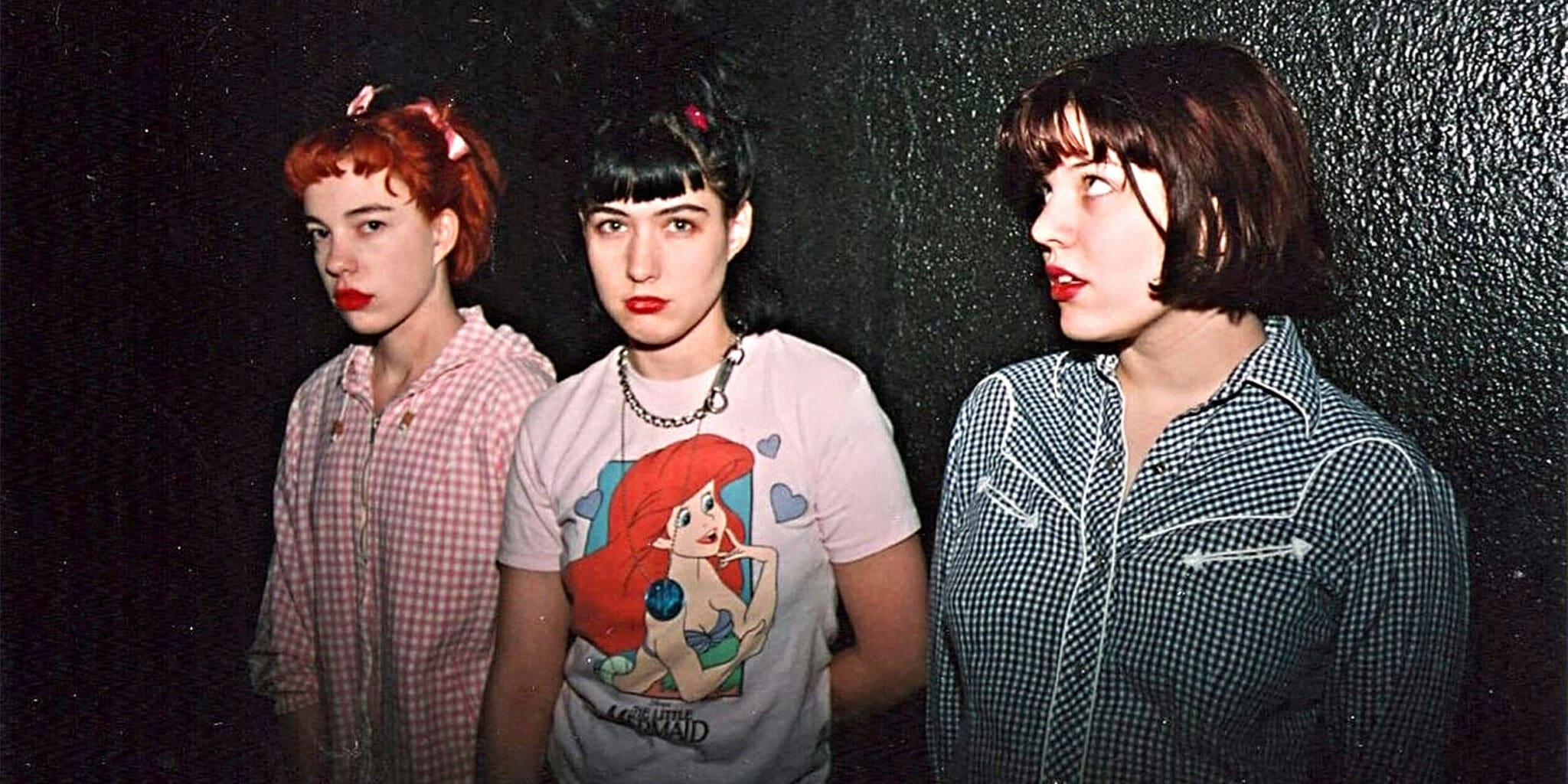Tie the laces of your combat boots tight and make your way across campus to the University of Sydney’s Manning Bar. It’s May 2, 1997, and Bikini Kill is headlining.
Formed seven years earlier on the campus of Evergreen State College in Olympia, Washington, Bikini Kill is more than just a band. They are some of the pioneers of the underground riot grrrl movement; a strong precursor of what would crash through the nineties as feminism’s third wave.
Foundational to the inception of this broadly defined movement of feminism was its reactionary critique of the previous wave’s exclusivity. riot grrrl itself arose from the male-dominated punk scene and was driven by those who wished to challenge traditional preconceptions of gender, body, and heteronormativity. The scene emphasised individuality yet found strength in creative and collaborative forms of grassroots protest. More than a musical genre, riot grrrl was a feminist revolution that was as loud and unapologetic as the screeching guitars and screaming vocals of its musical proponents.
Although popularised as the Spice Girls’ slogan, this was the origin of the saying “Girl Power”.
The riot grrrls harked back to a classic punk DIY philosophy. This approach to cultural production was an effective means to mobilise and communicate with the community pre-web 2.0. Across the United States, riot grrrl cassette tapes and homemade zines began to circulate between scenesters, created by individuals who resonated with the emerging subculture.
Kathleen Hanna, Bikini Kill’s lead singer, was a key figure who in many ways encapsulated and fuelled the movement through her impassioned performances and piercing lyrical intent. Her influence is irrefutable, though often overlooked. This is, after all, the woman who wrote the line “Smells Like Teen Spirit” for Kurt Cobain. Renowned for her fierce musical presence, Hanna was known to perform with words such as “slut” written in lipstick across her midriff and would stop playing to demand that the boys move to the back of the pit, girls to the front.
In 1991, the second issue of Bikini Kill’s eponymous zine contained a “riot grrrl Manifesto”, asserting the desire to create a scene that was non-hierarchical and bold in its response to oppression; that undermined the status quo and enabled girls to speak up. It declared:
“BECAUSE we are angry at a society that tells us Girl = Dumb, Girl = Bad, Girl = Weak.”
The growling “rrr” in “girl” was emulative of the anger which fed the riot grrrl rebellion and captured its roaring desire to redefine and reclaim notions of girlishness and girlhood. Embracing this aesthetic and language reflected a step away from these feminists’ second wave predecessors. These later activists primarily sought to achieve a sexual liberation that disavowed such labels and the conventional stereotypes of femininity and condescension that underpinned them.
Bikini Kill would release their final album, Reject All American, in 1996. They would disband a year later; the year they played at USyd. To see these Pacific Northwest agitators play at the Manning Bar nearly 25 years ago was to witness the end of an era. As the scene grew it had become even less coherent. The band’s hiatus reflected the deterioration of a movement that was informally organised and dependent on decentralised action; cracks that were finally beginning to rupture.
riot grrrl had never been without its flaws. The growing interest in intersectionality questioned the inclusivity of a subculture that had, for the most part, arisen from the white middle class. As riot grrrl entered the mainstream it became a catch-all term. The distinction that was initially the movement’s strength was cheapened by moral panic and the mainstream commercialisation of the ‘girl power’ mantra. Alongside increasing public critique, the media prioritised certain spokespeople and assumed shared definitions and aims. This presented a commonality that the riot grrrl firmly rejected.
In many ways, the deeply complex rise and fall of riot grrrl is telling of the deeper multiplicity and internal tensions that pervade and propel feminism to this day. But as more girls pick up guitars and decide to start a band, and where collaboration, activism, and self-expression are further facilitated by online platforms, we can and should look back to our riot grrrl foremothers. riot grrrl isn’t dead: the unapologetic and interrogative attitude lives on. Its legacy of empowerment is undeniable.
The final line of Bikini Kill’s manifesto concludes resoundingly:
“BECAUSE I believe with my wholeheartmindbody that girls constitute a revolutionary soul force that can, and will change the world for real.”





